Bury is a very interesting place for transport enthusiasts not only because of its bus station (see my earlier ‘blog’ dated 09/08/2014) which forms part of Bury Interchange and also includes the terminus of the Tramway line.
The tramway runs largely on the trackbed of the old railway line that started at Manchester Victoria and now involves street running in the city itself.
If that is not enough, there is also the preserved ‘East Lancashire Railway’ (ELR) that runs North to Rawtenstall and Ramsbottom. This being based at Bolton Street station which is barely 5 minutes walk from the Interchange.
The view from the platform end which shows how either of the 2 platforms can be accessed from both the running rails.
The first generation of modern trams were Italian built Ansaldo Firema T-68/T-69‘s. Dating from the early 1990’s They have now all been withdrawn.
‘Metrolink’ the operator have replaced them with new Bombardier ‘Flexity Swift 5000’ ‘Light Rail Vehicles’ (trams to you and me).
84 units have been delivered and another 32 have been authorised to be delivered up to 2016. Costing £2,000,000 each they are fast, powerful and comfortable.
But then there are also trains, buses.............!
Both platforms are in use and here car No. 3057 is seen departing whilst car No. 3020 waits for departure time.It
carries the name ‘Lancashire Fusiliers’ an apt name considering that 2014 is the centenary of the outbreak of the First World War in which the regiment like many others suffered badly.
The ‘ELR’ has a history dating back to 1859 when a company of that name operated from 1844 until 1859 running over much of the route that today’s ‘ELR’ covers.
After an acrimonious relationship with the ‘Lancashire & Yorkshire Railway (L&YR) the ‘ELR’ was absorbed by the ‘L&YR’ in 1859.
Ownership then continued through the ‘LMS’ and on to ‘British Railways’ who finally closed the line down in the 1980’s.
The modern ‘ELR’, a heritage railway opened in 1987.
Today, the line is one of the UK’s premier preserved railways.
After the modernity of the tramway, it is like stepping back in time. It is pleasing to see the use of 1950's vintage signage.
Just look at this marvelous signal gantry controlling the approach from the South.
This handsome structure on platform 2 provides a tea room/cafe and shelter in poor weather conditions.
Heading North from Bury trains run via Summerseat to Ramsbottom and Rawtenstall.
On view on the day were,
No. 61994 The Great Marquess
Designed by Sir Nigel Gresley and built as a K4 class loco in 1938 by the LNER and numbered 3442 in service. The class was 6 loco’s strong.
The K4’s were designed specifically for the West Highland Line to Mallaig and Fort William.
Withdrawn in 1961 and sold into preservation it was stored on the Severn Valley Railway from 1972 until 1980 when it was overhauled.
Sold in the mid 2000 it was then overhauled at Crewe. It has since moved back to Scotland where it operates trains on the national rail network.
D1501
Built by Brush Traction in 1962 being powered by a Sulzer 12LDA28-C engine. Under the TOPS numbering system it became 47402.
It was unusual in that it was fitted with both steam and electric train heating capability from new and also the Westinghouse braking system.
Withdrawn in 1992 in BR blue livery, it entered preservation in 1993 being repainted into its original livery in 2010.
Withdrawn in 2001, the loco was overhauled and re-entered service in 2005.
D9531
Built by British Railways (BR) at Swindon in 1965 as one of its Class 14. A Diesel Hydraulic locomotive, a type of transmission that at that time was in favour with 'BR’s Western Region.
Sold out of service D9531 arrived at the ‘ELR’ in 1987 in the National Coal Board’s dark blue livery.
Withdrawn at the ‘ELR’ in 1997, the loco was subject to an overhaul that lasted 15 years after which it ran temporarily as D9556 to emphasize that it was effectively a brand new loco. The original production run of 55 loco’s had been numbered D9500-9555.
The 'ELR' has only recently hosted an event to celebrate 50 years of the Class 14 with 10 of the loco's in preservation being in attendance.
11506 (D2956)
Pictured in an anonymous black livery, this loco was one of 5 produced for British Railways by Andrew Barclay and Sons of Kilmarnock. The first four were numbered 11503-11506. They then became D2953-D2956. The fifth which was produced for departmental stock work as No. 81 was re-numbered to D2956 when the original loco was withdrawn.
Two loco’s survived (‘54 and ‘55) to become BR Class 01 001 and 01 002. They were withdrawn in 1979 and 1981 respectively and cut up.
W56289
A Class 121 Driving Trailer having arrived at Bury. Built by the Pressed Steel Company in 1960 to lot number 30519.
Working with another Pressed Steel set this time a 2 car DMU Class 117 numbered DMBS 51339 and DMS 51382 built in 1960.
13594
Every preserved railway seems to have on 08 shunter on strength and the ‘ELR’ is no exception. Its TOPS number was 08479.
Built by British Railways at nearby Horwich works in 1958. Powered by an English Electric 6KT engine.
RNAD 167
This quaint little reduced height van which stands at Bury was used for carrying ammunition by its previous owner the Royal Navy.

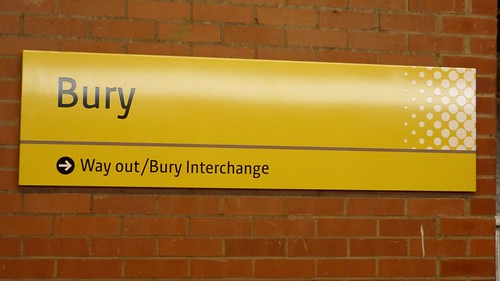

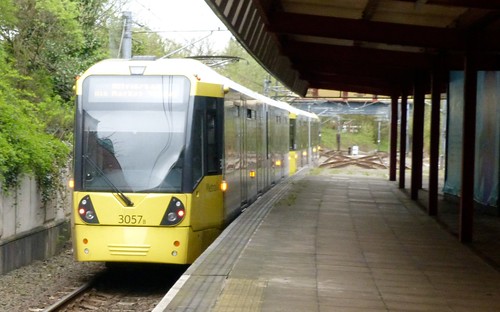


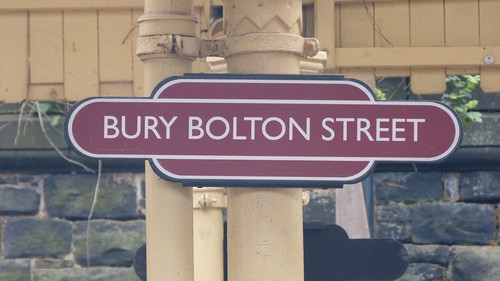
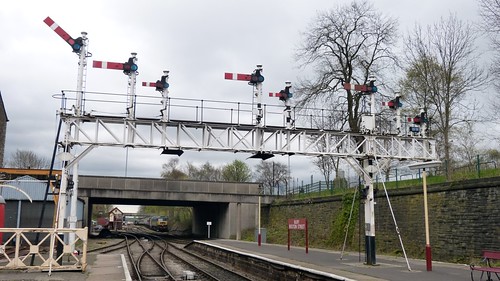




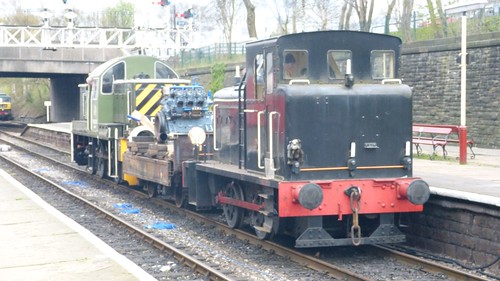
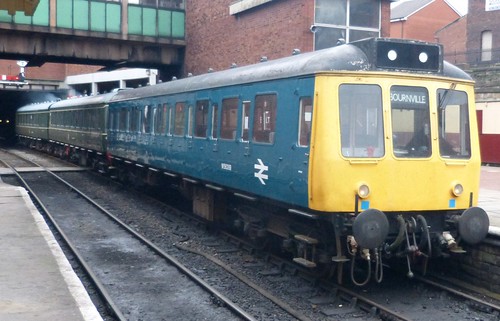
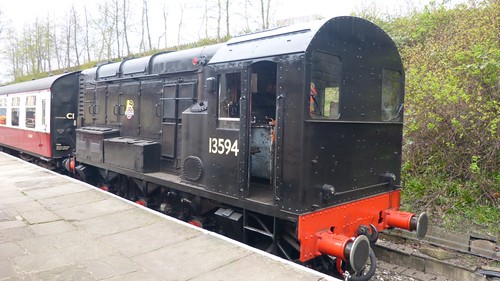

No comments:
Post a Comment